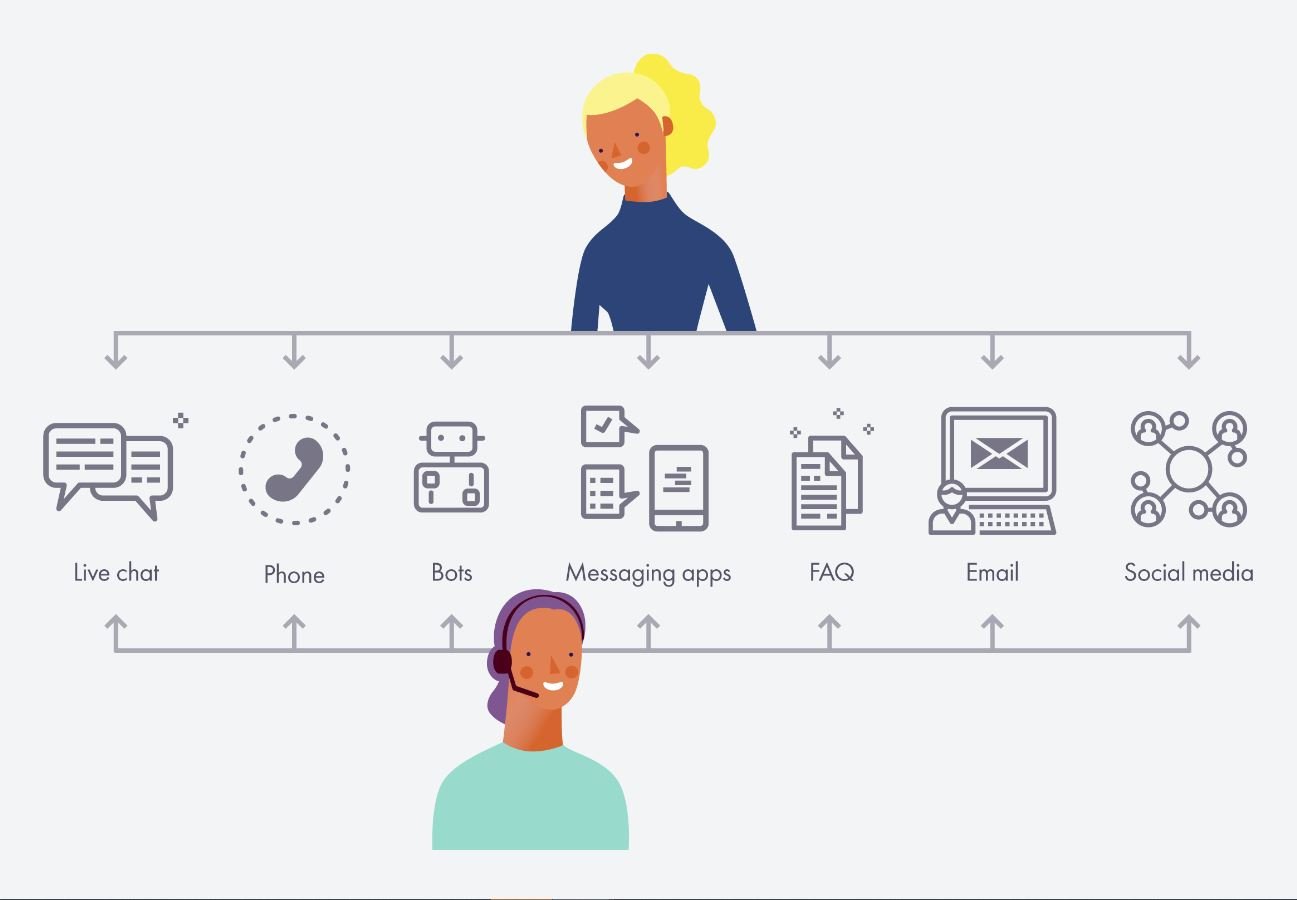Table of Contents
Customer service: what it is and why it’s fundamental for every organisation
Customer service is the set of tools deployed by a company to assist a customer before, during and after the sale of a product or service.
The goal of all customer service activities is to ensure maximum customer satisfaction through professional, efficient and friendly support. People who are happy with the service they have received are more likely to trust the firm, remain loyal and make repeat purchases over time.
In a market where goods are increasingly similar and consumers have ever greater expectations of businesses, focusing on customer service is a key way of standing out from the crowd and gaining a competitive edge.
What does customer service involve?
As we’ve already seen, customer service is about helping customers to answer queries and resolve problems before, during and after their purchase. In fact, good customer service means accompanying the customer along every step of their journey by responding quickly and clearly to their every need. For an e-commerce business, customer service is even more important because not only does it provide support for products offered, it also deals with issues to do with online payments, shipping and returns. Often, the customer service department of an e-commerce business also fulfils the role of sales assistant, providing information and advice on the items sold and ensuring the purchase process is as smooth as possible.

Customer service tools
There are a number of channels that companies can use to communicate with the public and provide them with customer service. Let’s look at the main ones.
Point of sale assistance
Many points of sale – think, for example, of shopping centres and consumer electronics shops – offer in-store assistance to resolve any problems customers might encounter when using the products they have purchased.
In-store assistance enables businesses to provide customer service to people who do not have access to — or are not at ease with — digital channels. On the other hand, it can be costly and time consuming due to the lack of “filters” for screening out requests and selecting only those that really require handling by customer service staff.
Telephone and online support
Email, smartphone apps, online forms and dedicated contact centres enable people to communicate directly with a firm to ask questions, troubleshoot problems or make complaints. Although call centres are undoubtedly costly for businesses, they can really add value for customers by allowing them interact with human beings.
Social media
Social customer care enables people and companies to communicate using social media platforms. Social networks are a simple, quick and interactive means of providing customer service either via public comments or direct messages. These channels can help businesses save money on management costs by eliminating time spent on the phone and streamlining communication.
Furthermore, constant monitoring of posts and comments can provide invaluable insights into what people think about a brand’s products and services, allowing it to take action to protect its reputation, if necessary. In some cases, it can even enable more proactive customer service by intervening directly in conversations to respond to customer needs.

Communities and DIY tools
Customer service can use a series of tools that enable consumers themselves to look for answers to questions and solutions to problems. These include communities and forums, FAQ (Frequently Asked Questions), tutorials and other informational material for users. These resources lighten the workload for customer support staff and speed up the troubleshooting process for customers.
Chatbots and hybrid chats
Assistance via chats over instant messaging apps like WhatsApp, Facebook Messenger or Telegram can be used to provide quick answers to customer questions.
The use of chatbots – software that uses artificial intelligence to hold conversations with humans – is another way of quickly answering frequently asked questions.
However, not all questions can be answered by bots: the best solution is to use hybrid chats that combine artificial intelligence with human interaction.

Online reviews
Although they might not seem very interactive, online reviews are also another communication channel often used by consumers. They can provide an opportunity to answer questions and requests for support, or simply to strengthen a brand’s relationship with the public. So it’s important to reply to positive comments, to strengthen relationships with customers and build loyalty, as well as negative comments, where the goal is to properly manage criticism and complaints.
Why is customer service so important?
The quality of customer service is a key point of differentiation for companies working in the B2B and B2C sectors.
In a survey of 3,500 consumers around the world by Zendesk, 81% of respondents said that a positive customer service experience increases the likelihood of buying again from the company in question. 61% of respondents also said that a negative experience with customer service might lead them to shop elsewhere.
What are the benefits of efficient and well-organised customer care?
- As we’ve said, an excellent level of service is a differentiator that offers a significant competitive advantage to businesses, especially in a market where products (and prices) are similar.
- Increased sales – According to research conducted by Frederick Reichheld at Bain & Company, a 5% increase in customer retention leads to a 25% to 95% increase in revenue. Loyal customers tend to spend more than new or occasional ones. Furthermore, winning a new customer is a much more costly process than keeping an existing one.

- Reputation and credibility – By offering a positive experience throughout the customer journey, businesses can improve trust and loyalty. In some cases, happy customers can become brand advocates, posting positive comments and reviews that influence the buying decisions of other people.
Likewise, a negative experience with customer service can lead people to bad mouth a brand online and in the real world, damaging its reputation. Indeed, a study conducted by Salesforce showed that 62% of consumers share their negative customer service experiences with other people. A single critical comment posted on social media can lead thousands of users to shop elsewhere, with clear financial consequences.
How to improve customer service
So how do you provide customer service that builds trust and loyalty by putting the customer at the heart of your business strategy? Here are a few tips:
-
Adopt an omnichannel approach
Today, there are multiple touchpoints between customers and brands, so it’s important to connect them together along the customer journey. This means using software that collects information on every user during their various interactions and integrating this into a single interface.

In so doing, all the company’s customer-facing departments (sales, customer service and marketing) will have a clear overview of the situation and be able to offer faster and more personalised service.
-
Emotionally engage the customer
According to a study published in the Harvard Business Review in 2015, customers who have an emotional connection with a brand are worth on average 52% more than those who are highly satisfied, but not emotionally engaged. As only human beings are able to show empathy, you need skilled and motivated staff in a customer service department to make a difference.
-
Leverage automation and artificial intelligence (AI)
As we’ve seen, technology can improve customer experience by providing answers to questions 24/7 and speeding up the resolution of problems.
-
Offer a wide range of contact channels
Not all customers are the same: some prefer the telephone, others prefer e-mail or chats, depending on the situation or where they are. By making various different tools available for interacting with the company, you make communication smoother and more pleasant for customers.
The challenge facing companies today is how to best combine the most advanced digital technologies with staff to provide integrated customer service that is personalised, efficient and empathetic towards consumers.



